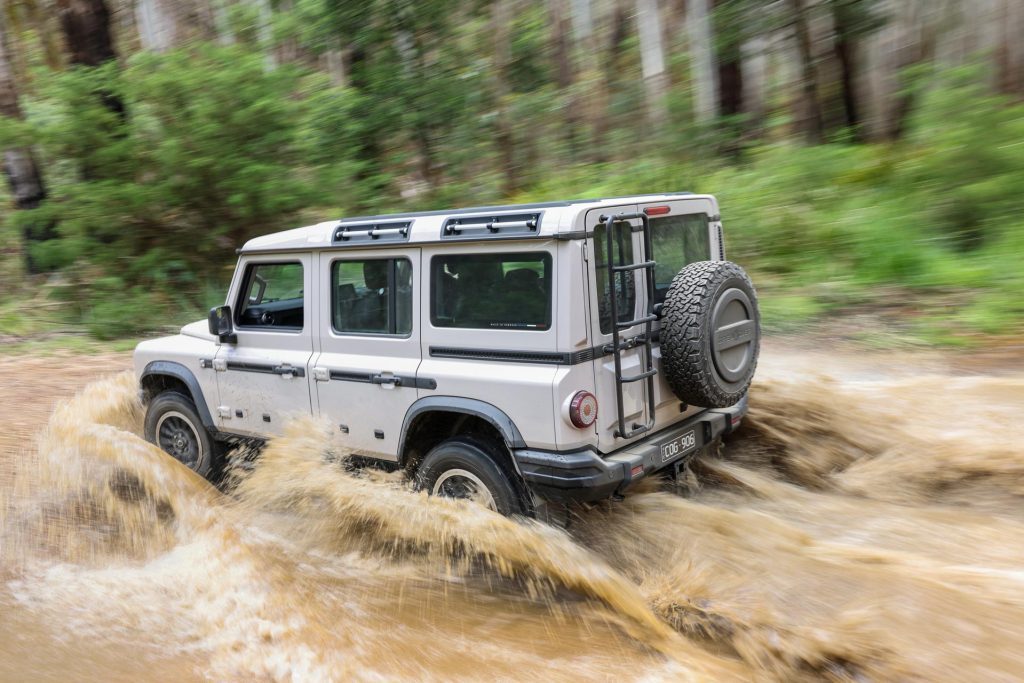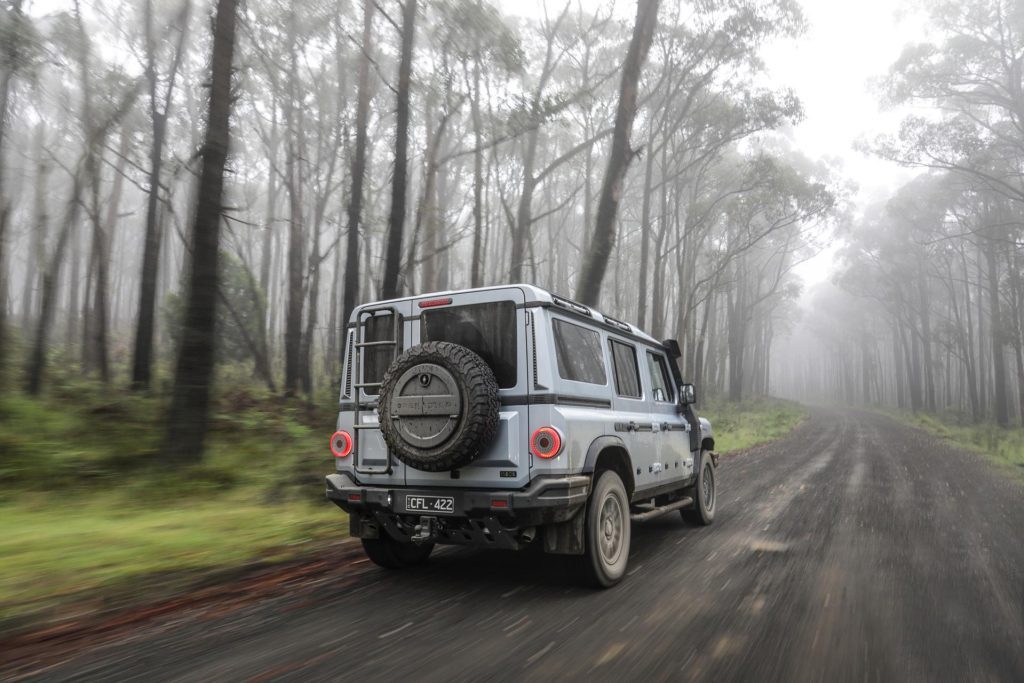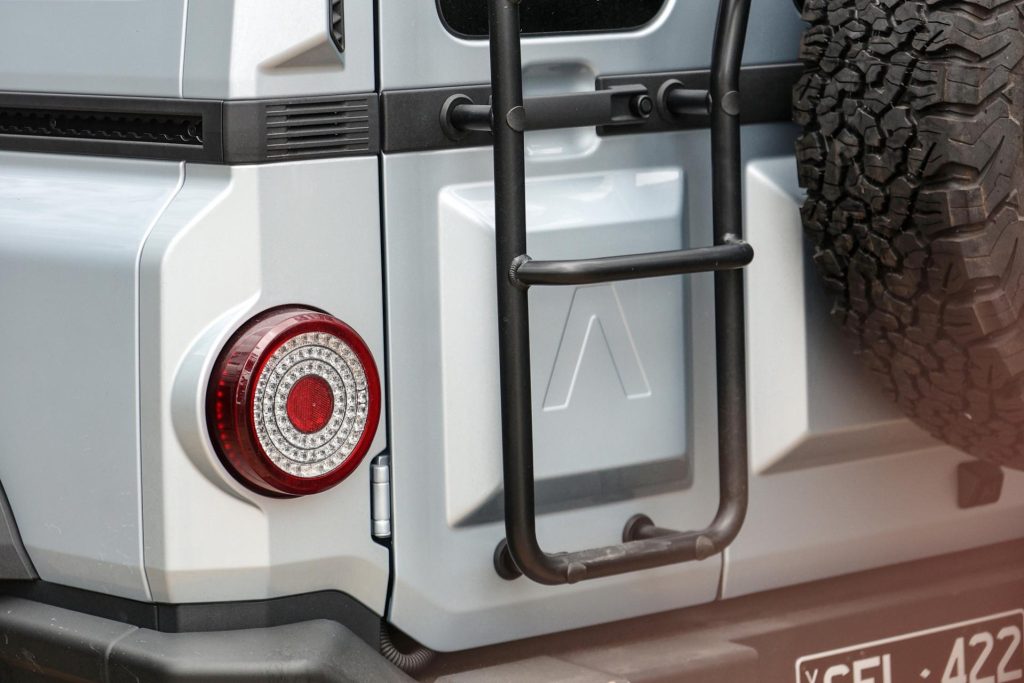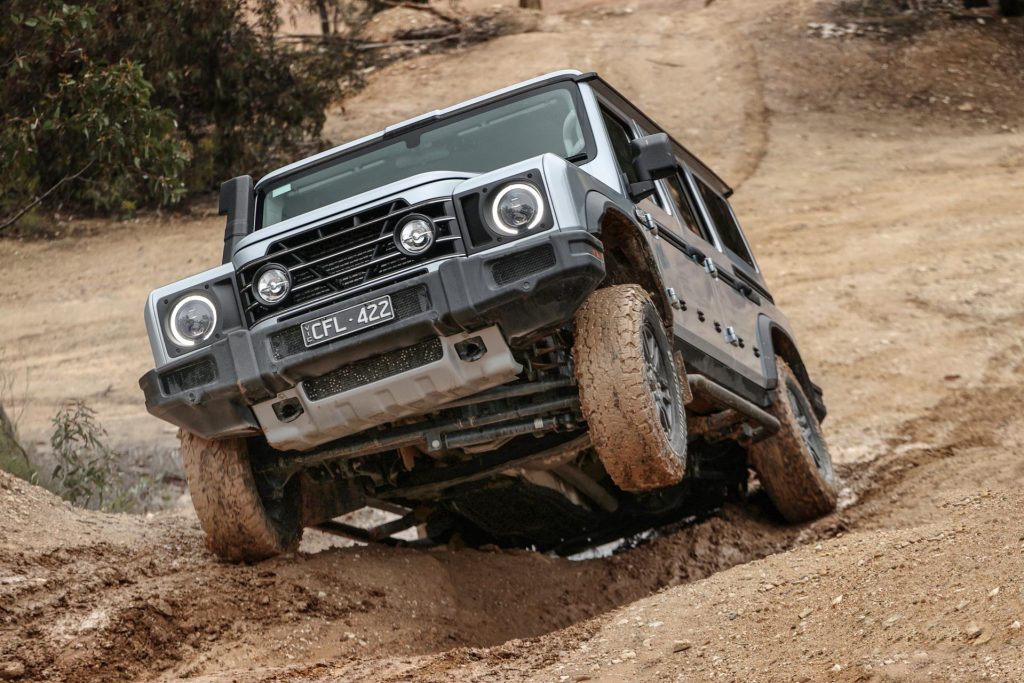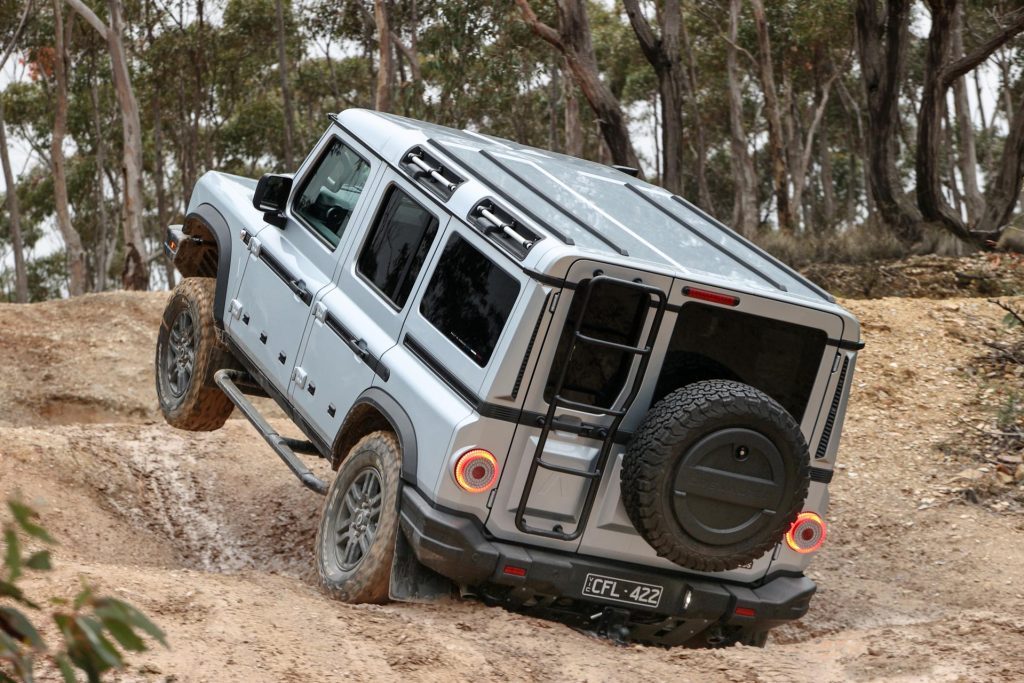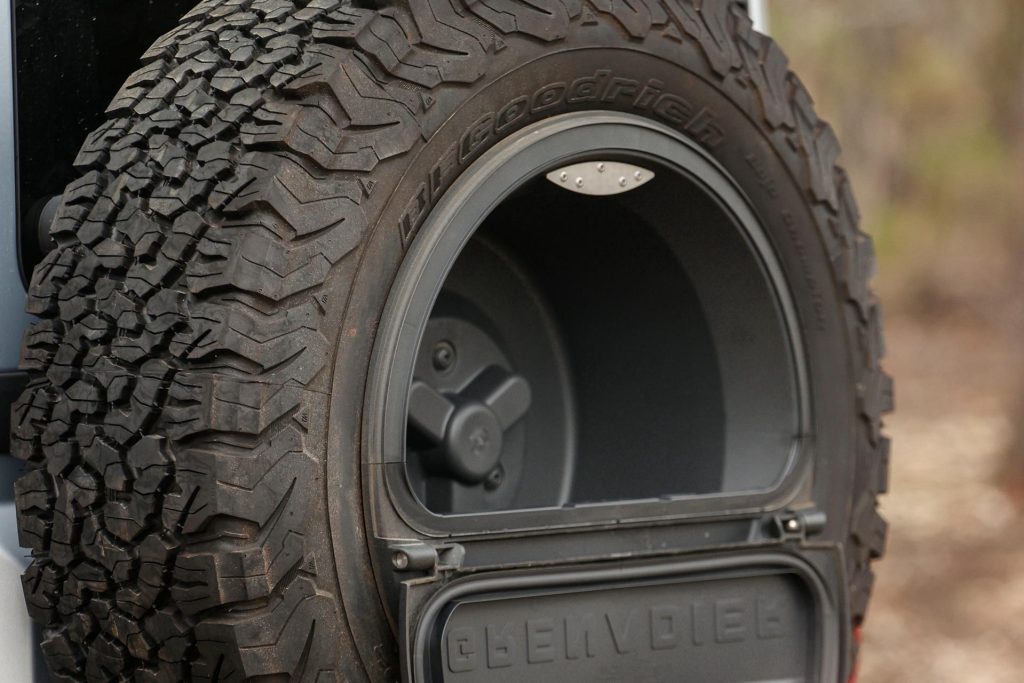2023 Ineos Grenadier review
When Defender was no longer a basic off-roader, Ineos devised a modern successor, the Grenadier.

When Defender was no longer a basic off-roader, Ineos devised a modern successor, the Grenadier. It’s the real deal, at home off road.
It’s not often you attend the launch of a new model AND a new brand simultaneously. To qualify that, a new European brand; that’s rare.
In this case it’s a group you might have heard of (#Ineos) that is making something that reminds of a much loved icon of off-roading, the former Defender 110. Its new machine is a reincarnation of sorts, designed to be as simple as possible to get the job done effectively and reliably.
Ineos Automotive has just launched its newcomer locally, the Grenadier Station Wagon. It’s a five-door and is set to be joined next year by a double-cab ute, the Ineos Grenadier Quartermaster.
Ineos is a British chemical giant and its boss, Jim Ratcliffe, is an off-road fan. He tried to buy the presses of the old Defender from JLR but was rebuffed.
So at the Grenadier pub he concocted the idea of a new hard core off-roader. To make it so, he inaugurated Ineos Automotive. The vehicle was named after the pub which he subsequently bought.
Brand new and yet oddly familiar
Five years and a billion dollars later, we get to drive the finished product, as it had been envisaged, only back in 2021 the SW price was set at $93,000. Now it kicks off at $119k for the Utility Wagon and $120k for the five-seat Station Wagon.
Still, this is a far cry from the Defender 110 of yore, despite appearances. Firstly it shouldn’t leak at the first sign of rain and secondly you won’t be overtaken by trucks.
This is much more modern-day normal with decent performance, acceptable ride quality (for a body on frame design) and most of the mod cons; it’s no stripper.
It does remind somewhat of the Defender 110 to behold though, especially from the A pillar back, with its upright panels, and round rear lights. However, at the front the bonnet shape is different, while the headlights are more technical (LEDs).
At the rear is a 70:30 split rear door, the full spare attached to the larger section. It’s the familiar upright Defender feel inside too but everything else is novel. Behind the wheel, there are no instruments, just warning lights.
The speedo and rev counter are in the upper right hand corner of the infotainment touchscreen, easy enough to spot. Ask any Tesla owner. Not about the revs part perhaps.
Below this is a series of buttons for the HVAC system while up above, aviation style, is another console for off-road controls.
It seems complex at first but familiarisation happens quickly. You don’t need to consult the touchscreen to drive the thing. Even volume and tuning are by conventional knobs, start up by key.
On the same simplicity front, there’s no adaptive cruise control, and no nav (it’s via wireless Apple or wired Android Auto). There are no road drive modes either. But it is welcoming inside, with leather trim and aluminium highlights.
Plus it has clever features; there are two horns, one for morons, the other a tooter to let pedestrians/horses know you’re coming without scaring them. And there are ‘Safari’ overhead windows, removable if you want.
Differences you might notice
Visibility out the back window isn’t flash but external mirrors are fine for those who can be bothered to use them.
And you will because turnarounds aren’t flash either, at 13.5m, while there’s 3.5 turns lock to lock. On that, the engineers opted for recirculating ball steering because it works better in off-road conditions.
That also means Grenadier steering feels different on tarmac; there’s some freeplay about centre, and nothing in the way of self-centring. But you get used to this. It’s more in turnarounds that you notice how much wheel twirling is involved.
It’s ever so much better on road than the Defender ever was; the engines don’t roar at you, road and wind nose are well contained and acceleration isn’t glacial (0-100 in 8.8-9.8sec), particularly for something weighing 2.6-2.7 tonnes. Brakes are by Brembo so work well.
There are a couple of oddities. The shift lever looks BMW familiar because the powertrains are from the German. And ditto the wheel that’s sourced from BMW subsidiary Mini.
Mention of BMW powertrains, there’s a 3.0 IL6 turbodiesel or turbopetrol. Your choice, no cost difference. The diesel makes 183kW and 550Nm, the petrol 210kW and 440Nm. They’re both strong down low.
Average fuel use is in the 14s for the petrol, in the 11s for the diesel. Townies might opt for the petrol as there’s less lag off the line while for off-roading you might choose the added grunt of the diesel.
Both are good in slow going though, and each is attached to a modified ZF eight-speed automatic transmission. There’s also permanent AWD with a lockable centre diff.
Taking to the trails
Riding high with 264mm of ground clearance you have to clamber up to the driver’s seat through not especially large door openings. But these shut with a reassuring clunk. We noticed not a rattle, squeak or a buzz in any of the vehicles we drove. They’re solidly built.
The seats are wonderful, supportive, Recaros, finished in cloth or leather and surprisingly are fully manual. That’s so you can wash out the interior safely. Always with simplicity, reliability and longevity as the guiding principles.
It’s the same for things like suspension; no airbags under there, just quality Eibach progressive springs and Bilstein dampers over Carraro beam axles. The set-up was finetuned by engineering partner Magna Steyr.
The Grenadier despatches the bumps well, and while not perhaps as pampering as air suspension it coped well with the potholes on the metal roads, and up the rock-strewn (and coincidentally named) Ratcliffe Track. The long travel sorts out the worst of the gnarly stuff; sometimes you hit deep potholes and expect a thud but it never eventuates.
It’s at its very best where it was designed to be, properly off road. Ratcliffe Track has a bit of everything; some ascents over rocky terrain were certainly testing.
Even in the petrol version we initially drove with central but no front or rear locking diffs, this inched its way up inclines without any real hesitation, aided by the optional off-road rubber. Later, on the return trip in the diesel, and up a more serious incline we selected rear diff lock.
While it hadn’t been scrambling for traction it was even more composed and secure once activated. The articulation is supreme on this too, helping to keep all four wheels on the ground and the vehicle inching forwards in tricky going.
Curtailed front and rear overhangs mean generous approach and departure angles of 36 degrees. Along with decent ground clearance we didn’t touch down all day. It will wade through 800mm of water too.
Hill Descent Control works precisely as expected and set speed is variable. The torque from both engines, tweaked by Ineos engineers, is something else, pulling solidly above 1500rpm, especially the diesel.
Even on road, the transmission tends to hold a higher gear when you bear down on the gas pedal, lugging its way through, dropping a gear only when floored. Fuel use in the diesel was impressive; at the end of the day it suggested the tank was still full.
The petrol we noticed was using around 20L/
100km. Because of a caravan gremlin, we never got a shot at towing but it’s rated at 3500kg braked.
Hanker for a modern premium mountain goat of an SUV that will go almost anywhere and get you back in one piece? Ineos Auto has you covered with Grenadier, which also comes with a five-year unlimited km warranty.
Grenadier: In Brief
The Grenadier is built at an ex-Mercedes plant in Hambach, France, on the German border. The Utility version has the rear windows blanked out, no rear seats and a cargo barrier behind the front seats.
A Trialmaster edition is optioned for extreme off-roading – raised air intake, 17-inch steel wheels, front and rear diff locks, BFGoodrich All-Terrain tyres.
The Fieldmaster variant is optimised for road and trail – 18-inch alloys, leather trim, heated seats, carpets, premium sounds, and Safari windows. Both variants cost $134,500 and come standard with the Smooth Pack comprising alarm, front sonar, heated mirrors and auxiliary charge points.
The off-road tyres and diff locks can be added to the base Station Wagon for $4565. Skid plates and underbody protection come standard.
Colours other than white add $1105-$1510. A white or black painted roof adds $2070. There’s underseat dry stowage and an optional lockable bin in the spare wheel.
Optional items include a rear ladder, mats and seat covers, rock sliders, light bars, and carriers/mounts for every imaginable item of sports equipment.
Expect 5.5 tonnes of optional winching power should things get the better of you.
Model
Ineos Grenadier 3.0 Petrol
Price
$120,000
Engine
2998cc, IL6, T
Power
210kW @ 4750rpm
Torque
450Nm @ 1750-4000rpm
Drivetrain
8-speed auto, permanent AWD
0-100 km/h
8.8s
Fuel Use
14.5L/100km
C02 Output
329g/km
Weight
2643kg (claimed)
This story first appeared in the February 2024 issue of NZ Autocar magazine.
View listings on Trade Me Motors: Ineos
This article was originally published on autocar.co.nzAlso consider
